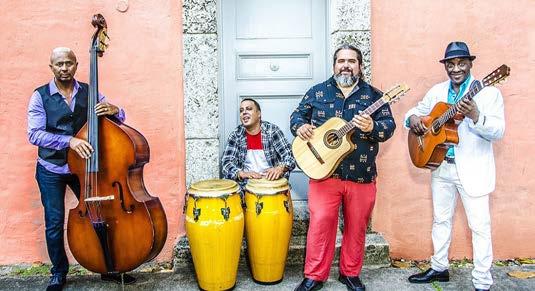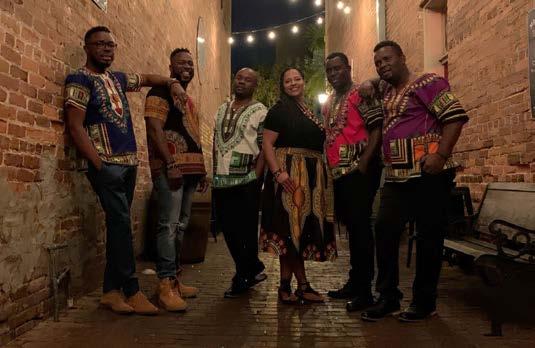
1 minute read
Traditional Artists
the Amphitheater Stage, Cortadito will perform early 20th century Cuban music in the styles of son montuno, guaracha, boleros, nengon and bolero son.
Karibbean Groove
Advertisement
Lead by Judes Albert, Karibbean Groove is a dynamic dance band that performs a variety of Caribbean styles often performed in clubs or for important cultural celebrations like Haitian Flag Day and weddings. In addition to reggae, they play konpa, a meringue style Haitian dance music with roots in Africa, and zouk, a fast-paced carnival beat that originated in Guadeloupe and Martinique. The band members were born in Haiti, but met at church in Immokalee where their families worked as farmworkers. This versatile and high energy group stays true to the Haitian tradition of socially conscious music while also exploring new genres and expanding their fan base. They have performed at the Cape Coral Reggae Festival, several local festivals and cultural celebrations, charity fundraisers, and appeared at Radio-Tele Pacific in Haiti.
Plena Es
In the Cuban-rich region of South Florida, Plena Es has carved a space for Puerto Rican music by emphasizing the island’s distinctive bomba y plena musical traditions, percussion-driven sounds that reflect the island’s African heritage. Founded by Pierre Ramos in 2004, the band—featuring percussion, trombones, piano, and bass—stirs up a high-energy Latin dance music that is a touchstone for Puerto Rican identity.


Cortadito
Born in the Dominican Republic to Cuban parents, Jose Elias is a musician and arts administrator in Miami. He played with the Grammy-nominated group Conjunto Progresso as well as Miami stalwarts the Spam Allstars before co-founding Cortadito. On
Bomba is the 17th-century music created by West African slaves on Puerto Rico’s sugar plantations. Plena mixed bomba with indigenous Taíno Indian music, jibaro music of the island’s mountain farmers, chamber music of the Spanish colonizers and the rhyming verse of urban satirists. The result was often called “el periódico cantado” (“the sung newspaper”), due to the prominence of political commentary and day-to-day news in the lyrics. Backed by the rhythms of the panderos (hand drums), plena focuses on the story, often improvised, sung by a lead singer and chorus. “The bomba was traditionally played in backyards and private parties,” Ramos explains. “These rhythms were considered to be low-class. The plena then went from being played in the streets, to the town plaza, and finally among highclass Puerto Rican people.”
Ramos was inspired upon hearing Los Pleneros del Quinto Olivo as a young boy; he picked up the pandero and found that plena moved him. Shortly









